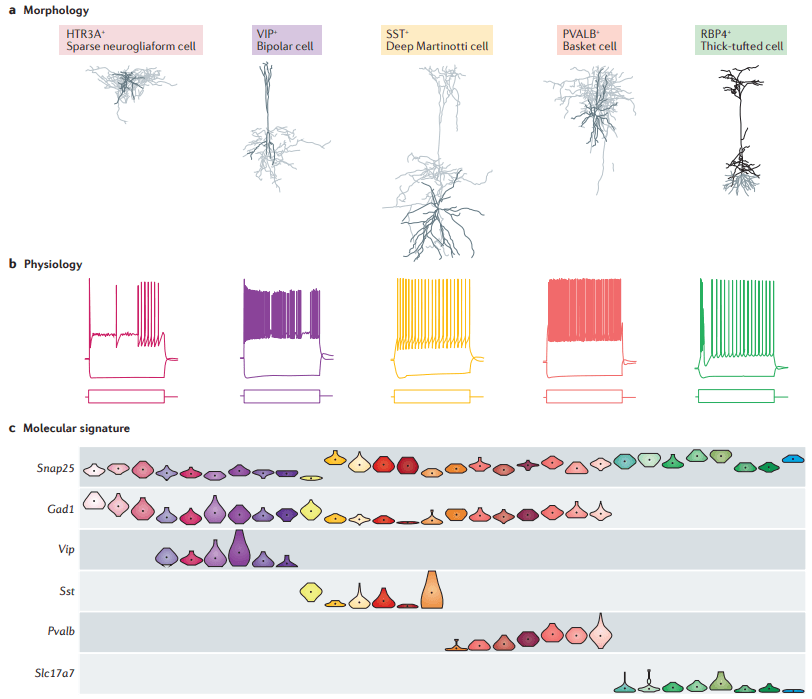Neuronal Cell Typing
Creative Bioarray provides visualization solutions for neuron cell typing and characterization in neurobiology research. We provide a variety of mRNA and protein targets for in-situ analysis of tissues to help customers achieve cell typing and molecular positioning in the context of morphology. Our molecular detection platform can realize the visualization of transcripts, and can also realize the visual analysis of transcripts and proteins at the two levels, escorting customers' research.
Neuronal Cell Typing
Neurons express more genes than any other cell type, resulting in a high degree of heterogeneity in neuronal subtypes. The discovery of neural progenitor cells and the suspension culture method that maintains their ability to differentiate into astrocytes, oligodendrocytes and neurons while maintaining their potential have made significant contributions to the fields of neuroscience and neuropathology. Neurons are the cells in the brain responsible for the rapid exchange of information. Although similar to other cells in the body, neurons are specialized in a way that distinguishes them from other cells and gives them some characteristics that enable them to play a unique role in the nervous system. Neuron types are usually defined by their morphological and/or functional characteristics. Certain types of neurons have certain morphological characteristics, unique transcriptomes and transcriptome-derived signal networks and markers, and functional phenotypes. There have been some combinations of markers used to distinguish specific neuron types and subtypes.
 Fig 1. Criteria by which neurons can be classified. (Zeng H, et al. 2017)
Fig 1. Criteria by which neurons can be classified. (Zeng H, et al. 2017)
Cell Typing and Location Services in Neuroscience
For neuron typing analysis, among the many molecular properties that can be considered, the most useful are protein composition (immunohistochemical analysis) and mRNA composition (in situ hybridization and RNA sequencing). We provide visual analysis solutions that can be used to analyze the co-expression patterns of multiple targets in neural-related functions, aiming to help researchers locate and characterize specific types of neurons or glial cell types in the process of neuroscience research. Our solution can provide common markers derived from existing reporter cell types to distinguish the expression patterns of neurons and glial targets that secrete different transmitters. Our experimental platform can provide probe selection and design solutions, which can be customized according to customer needs and goals and can also accept the selection of designated reagent products.
 Fig 2. The core of cell typing service in neuroscience.
Fig 2. The core of cell typing service in neuroscience.
Available Neuronal Marker Combinations
| Neuronal markers with specific neurotransmitters | Cholinergic neurons. Nerve cells that use acetylcholine as the main neurotransmitter are called cholinergic neurons, so some proteins involved in acetylcholine metabolism can be used as markers. |
Glutamatergic neurons. Glutamatergic neurons can be distinguished by the vesicle glutamate transporter SLC17A7 / vGluT1 and SLC17A6 / vGluT2.
Members of the glutamate-gated ion channel superfamily, such as NMDAR1 / GluN1 and NMDAR2B / GRIN2B / GluN2B can also be used as markers for glutamatergic neurons. |
GABAergic neurons. The neurotransmitter γ-aminobutyric acid transporters, receptors, and enzymes can be used as markers of GABAergic neurons.
Available markers include GABA transporter 1, GABA B receptor 1, GABA B receptor 2, GAD67/GAD1, GAD65/GAD2. |
Dopaminergic neurons.
Some of the available markers include GIRK2 (G protein activated inward rectifier potassium channel 2), DAT1 (dopamine transporter), and TH (tyrosine hydroxylase). |
Serotonergic neurons. Serotonergic neurons can synthesize the neurotransmitter serotonin (5-HT).
Available markers include SLC17A8 / vGluT3, TPH2 (tryptophan hydroxylase), SERT (serotonin transporter), Pet1. |
If you are interested in our service, please contact us for cooperation. We look forward to cooperating with you in the near future.
Reference
- Zeng H, Sanes J R. Neuronal cell-type classification: challenges, opportunities and the path forward[J]. Nature Reviews Neuroscience, 2017, 18(9): 530-546.
All products and services on this website are only suitable for non-medical purposes.


 Fig 1. Criteria by which neurons can be classified. (Zeng H, et al. 2017)
Fig 1. Criteria by which neurons can be classified. (Zeng H, et al. 2017) Fig 2. The core of cell typing service in neuroscience.
Fig 2. The core of cell typing service in neuroscience.


